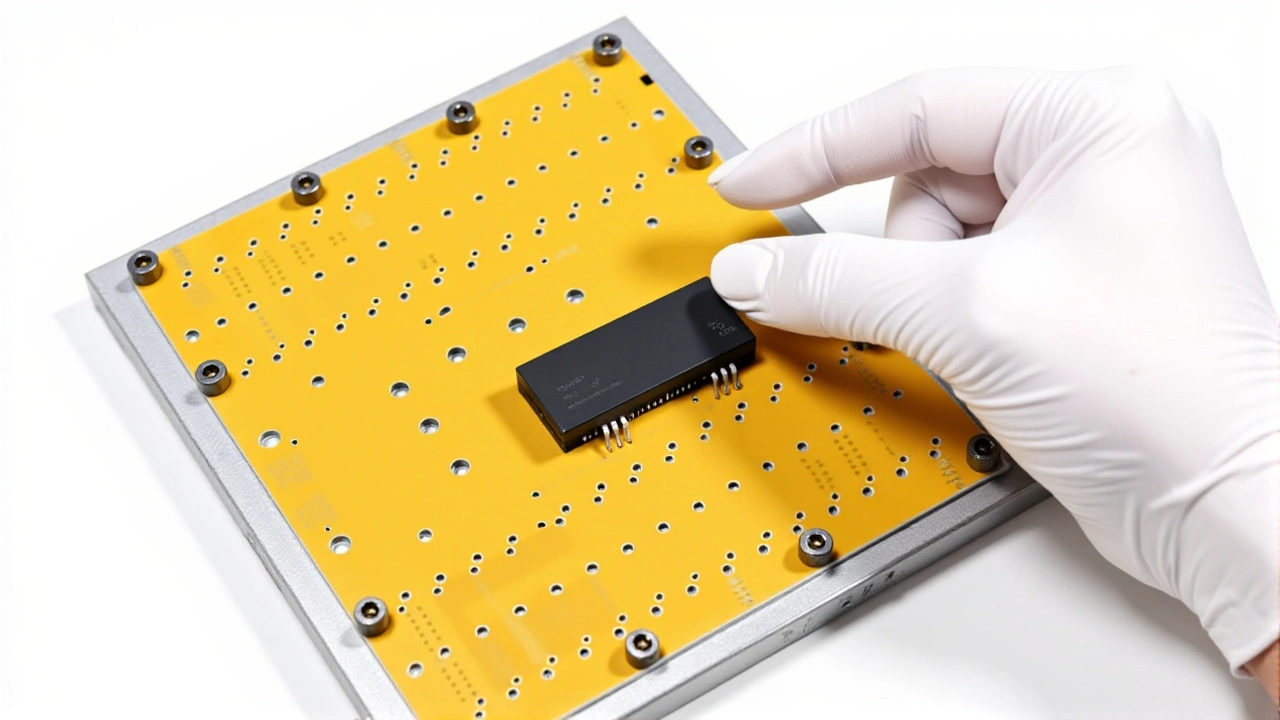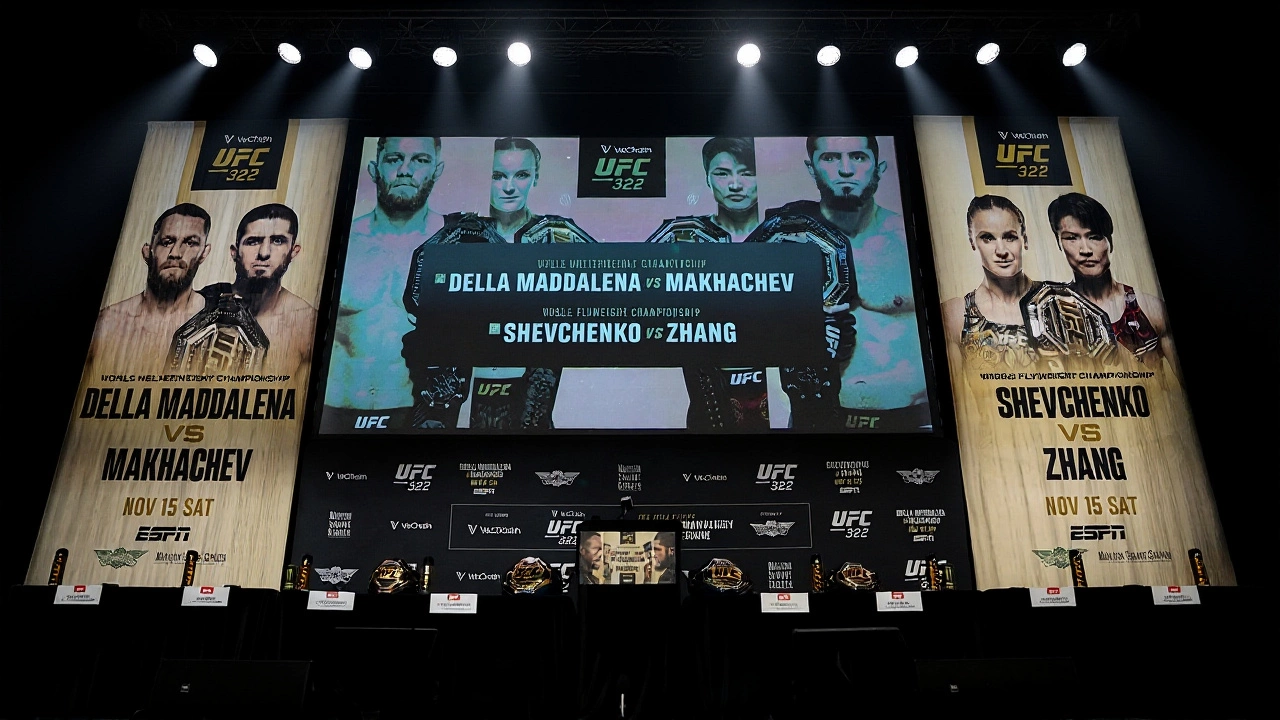The roar of the crowd at Madison Square Garden wasn’t just for the fighters — it was for the invisible force reshaping how we watch mixed martial arts. On Saturday, November 15, 2025, the Ultimate Fighting Championship (UFC) and IBM debuted In-Fight Insights, a real-time AI platform that identifies historic milestones, streaks, and fight-altering stats the moment they happen. This isn’t just another stat overlay. It’s the first time a major sports league has embedded live, context-aware AI directly into the broadcast feed — and fans noticed.
The Moment the Fight Changed
During the main event between Della Maddalena and Makhachev, as the fifth round ticked past two minutes, commentator Jon Anik paused mid-sentence. "Wait — that’s the 157th significant strike of the night," he said, eyes widening. "No fighter in UFC history has hit that mark in a single bout." The stat appeared on screen, animated with a subtle pulse, backed by a deep bass tone. It wasn’t pre-scripted. It wasn’t manually entered. It was generated by IBM’s watsonx AI system, trained on over 13.2 million data points from 20+ years of UFC fights and more than 2,400 athletes.
For years, fight analytics were confined to post-fight breakdowns or static pre-fight graphics. Now, the system detects patterns as they unfold — a fighter’s third consecutive takedown in a round, a striker breaking their own record for significant strikes in a championship fight, even subtle shifts in defensive posture that correlate with past knockouts. The AI doesn’t just report; it narrates. And it does it in under 1.2 seconds.
How It Works — And Why It’s Different
Behind the scenes, IBM’s Build Engineering team spent 14 months building data pipelines that ingest video feeds, wearable sensor data, and historical fight logs simultaneously. The system uses watsonx Orchestrate, an agentic AI framework, to trigger insights based on context, not just numbers. For example, if a fighter lands five body kicks in 12 seconds — a pattern historically linked to liver damage and fight-ending collapses — the system flags it, cross-references past fights with similar sequences, and generates a natural-language alert: "This is the first time since 2019 a fighter has landed five body kicks in under 15 seconds. The opponent’s win rate drops to 18% in those scenarios."
Unlike traditional AI tools that sacrifice speed for depth — or vice versa — this system does both. "Anyone who uses AI tools knows they’re normally able to go deep or fast, but not both," said Alon Cohen, Executive Vice President of Innovation for TKO Group Holdings, UFC’s parent company. "We cracked that. The engine now generates hundreds of insights per event, and it does so in real time — without lag, without error, without needing a human to ask the question first."
Before this, generating even a single deep-dive stat took analysts 4–6 minutes. Now, the system cuts that to under 30 seconds. The volume of insights has nearly tripled. And the workload? Reduced by 40%. That freed up UFC’s creative team to focus on storytelling — not spreadsheet crunching.

What IBM Gains — And What Fans Get
IBM isn’t doing this for charity. As previously reported by Sports Business Journal, the tech giant is paying the UFC low eight figures over four years to be the official partner in global AI, official technology, and Enterprise AI. That’s not just branding. It’s a live lab. Every punch, every takedown, every gasp from the crowd becomes training data for IBM’s next-generation AI models.
For fans, the impact is immediate. Casual viewers suddenly understand why a fighter is winning — not just that they’re winning. Hardcore fans get a new layer of analysis, like a chess grandmaster seeing three moves ahead. And broadcasters? They’re no longer guessing. "I used to say, ‘He’s on a roll,’" said Anik. "Now I can say, ‘He’s on a 12-fight striking streak — the longest among active welterweights since 2017.’ That’s not just color commentary. That’s journalism."
The system also feeds into social media, in-arena displays, and UFC’s app. During UFC 322, the UFC Insights Engine triggered over 217 live alerts across platforms — from Instagram carousels highlighting "Fight of the Year" trends to digital billboards in the arena showing real-time win probability shifts.
The Bigger Picture: AI as the New Commentator
This isn’t about replacing humans. It’s about elevating them. The AI doesn’t tell you who to cheer for. It tells you why the fight matters. And that’s the real breakthrough.
IBM’s Jonathan Adashek, Senior Vice President of Marketing & Communications, put it bluntly: "This is the latest example of how AI is really changing the game for the live sports viewing experience for fans around the world." But the truth is, it’s changing the game for the athletes too. Fighters now know their stats are being watched in real time — not just by coaches, but by millions. That changes preparation. That changes strategy. That changes the sport.

What’s Next?
UFC plans to roll out In-Fight Insights to all pay-per-view events starting in 2026, with plans to expand to UFC Fight Nights and international broadcasts. The system will eventually integrate with VR headsets and augmented reality glasses, letting fans see fighter biometrics overlaid on the octagon in real time. There’s even talk of a fan-controlled "Insights Toggle" — letting viewers choose which stats they want to see.
One thing’s certain: the era of passive sports watching is over. The next generation won’t just watch fights. They’ll understand them — down to the millisecond.
Frequently Asked Questions
How does In-Fight Insights improve the viewing experience for casual fans?
Casual fans now get instant context without needing prior knowledge. Instead of just seeing a fighter land a punch, they see, "This is the 142nd significant strike of the night — the most ever in a UFC welterweight bout." The system translates raw data into relatable milestones, making the action more meaningful without overwhelming viewers with jargon.
What data sources does the AI use to generate insights?
The system draws from over 13.2 million data points, including fight statistics, fighter biometrics, historical outcomes, and even environmental factors like arena temperature and crowd noise levels from past events. It also integrates real-time data from UFC’s wearable sensors and video tracking systems, allowing it to detect subtle movement patterns that humans might miss.
Is this technology being used by other sports leagues?
No other major league has deployed real-time AI insights at this scale during live events. The NBA and NFL use AI for post-game analysis and injury prediction, but UFC and IBM are the first to embed live, natural-language AI commentary directly into broadcast feeds during active competition — a first in sports tech history.
Could this affect how fighters train or prepare?
Absolutely. Fighters now study not just their opponents’ past fights, but the exact patterns the AI flags — like how often they drop their guard after a spinning back kick. Coaches are reworking training drills to counter AI-identified vulnerabilities. Some fighters have even adjusted their weight cuts based on data showing performance drops after specific hydration thresholds.
How accurate is the AI in predicting fight outcomes?
The system doesn’t predict winners — it identifies patterns linked to outcomes. For example, it knows fighters who land more than 70% of their body strikes in the first two rounds win 83% of the time. That’s not prophecy; it’s pattern recognition. Its win probability models are 89% accurate in retrospective analysis, but it’s designed to inform, not forecast.
Will this technology eventually replace human commentators?
Not even close. The AI’s role is to provide context, not charisma. Jon Anik still brings emotion, humor, and narrative. The AI just gives him sharper tools. Think of it like a surgeon’s scalpel — it doesn’t replace the surgeon, it makes the surgery more precise. The human voice remains essential to the soul of the sport.
